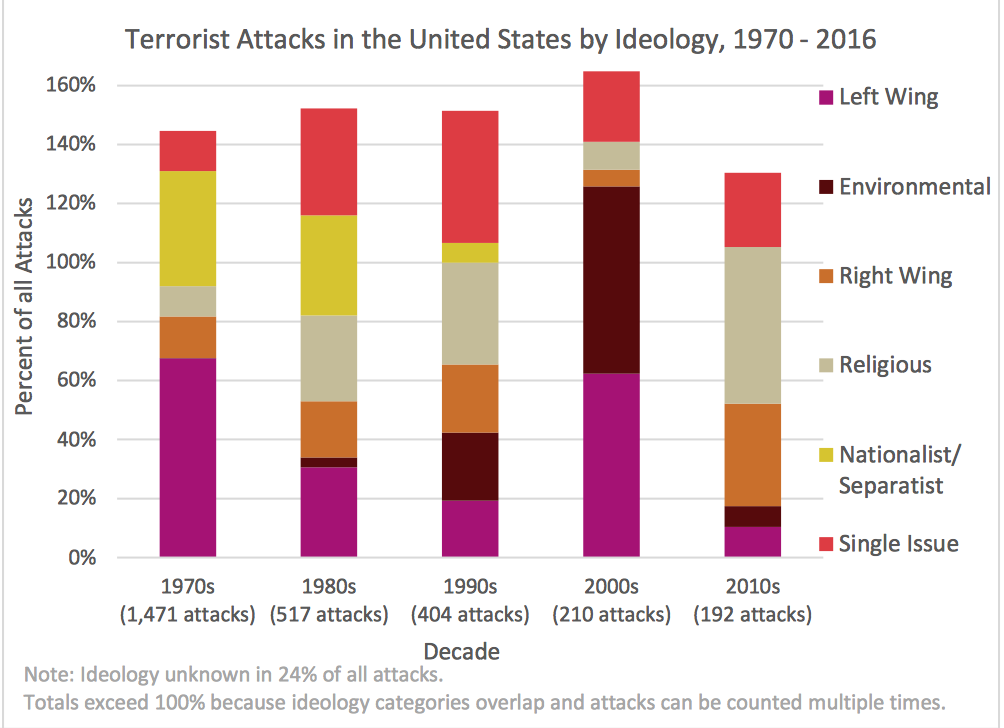
A new report out from the National Consortium for the Study of Terrorism and Responses to Terrorism (START) at the University of Maryland gives us the best current look at the ideologies that motivate terrorism in the United States.
Jihadist attacks and the fears they generate dominate both the news cycle and the popular imagination, as this week’s deadly incident in Manhattan reminds us. But the START report makes clear that events like this are far from the only, or even the main, story.
If we turn the clock back to the 2000s, 9/11 notwithstanding, we find that the dominant ideology motivating terrorist attacks in that decade was radical environmentalism, accounting for 64 percent of all incidents, with the Animal Liberation Front and Earth Liberation Front leading the way.
Religiously motivated attacks, including those perpetrated by those embracing jihadist ideology, represent just a small fraction of events during the 2000s.
While religious motivation jumps dramatically in our current decade, identified in 53 percent of cases, that includes not just jihadi or other Muslim extremists, but Christian anti-abortion extremists along with those targeting Muslims, Jews, and Sikhs.
While jihadi-inspired extremists account for 21 attacks from 2010 to 2016, anti-Muslim extremists are close on their heels, responsible for 18 attacks during the same period. And right-wing extremists of all stripes, from anti-government sovereign citizens to white supremacists and white nationalists, account for a full 35 percent of attacks.
What’s the takeaway from the START report? It’s that the story of terrorism in the United States is more complex and nuanced than the current narrative might lead you to believe.
Far from living in an unprecedented era of danger from terrorism, the reality is that terrorist incidents in the US have dwindled in number every decade since the 1970s. And, if you exclude the extreme outliers of Oklahoma City in the 1995 and 9/11 in 2001, the number of fatalities attributable to terrorism has yet to reach let alone surpass the levels seen in the 1970s.
That last statistic is a reminder that in the American experience, again, those few outliers notwithstanding, the story of terrorism is not one of routine mass casualties, or even any casualties at all. For every Oklahoma City, or 9/11, San Bernardino, or Pulse nightclub, there are have been literally thousands of non-lethal terrorist attacks — a full 91 percent of all incidents — in the United States over the last four decades.
Keep that in mind the next time some politician, or cable TV network, tries to stoke your fear and leverage it for their own ends.